
Michael Hare
-
Posts
813 -
Joined
-
Last visited
Content Type
Profiles
Forums
Downloads
Posts posted by Michael Hare
-
-
19 minutes ago, Susco said:
Previous post you mention Lime, now you post a picture of Dolomite. Calcium and magnesium.
Is this the same thing, and is it that bag that cost 90 Baht?
Yes, that is the bag that costs 90 baht. I called it Lime, but the real name is Dolomite. Does a great job.
-
 1
1
-
-
31 minutes ago, Susco said:
I have searched the farm shops here previously, and they don't know lime. Most of them sell gypsum instead.
My understanding is that lots of gypsum will burn the grass as well
We normally apply any fertilizer in the evenings. What we are appyling is Dolomite. Calcium and magnesium. Here in Ubon Ratchathani we buy it at a large agricultural fertiliser shop. The small retail shops will not stock it. It will not burn your grass at all.
-
-
Before trying the various chemicals which kill snails, why not try spreading lots of lime (I mean lots) across your lawn. Burns the snails and they disppear. A 50 kg bag of lime costs about 90 baht.
-
11 hours ago, thoongfoned said:
interesting read this thread...
around us people seem to have the cow buying buzz again, few of the wifes friends have bought mum with a calf in tow and preggers again, long ear type, high ish body, brown colour, 50/60,000 seems about the price here for said set up. we still have a couple of people cutting grass daily to haul to their cattle (more so when its dry season) helps to keep some of the weeds downs....
the wife has also been on about maybe buying some cattle..., (i just laugh at her) like i said it seems to be the "thing" to buy around here at the mo, wife said her friends have some spare cash and have just put it into some livestock (these are not farming type village folk)
a few people that farm pigs (like we do) have been buying cattle this year, seems to be plenty of cash about in and around the villages...
around here beef per kg at the "road side stalls" is still 280/320. in the village shops 350/370. people still cutting up cows in the village and selling it in 500,1000 ect lots most weeks... the beef biz seems busy all round...
Make sure you plant your grass before buying any cattle.
-
16 minutes ago, JungleBiker said:
Hello Michael,
You did not include Mulato II in the trial - might that be because Mulato II is not popular for cut-and-carry due to it not being so upright in growth habit? Or is there another reason?
What about the upright-growing Brachiaria variety Cobra - what happened to it? I think you started trials but did not commercialise the seed production?
JB
No, we did not include Mulato II in the trial, because the purpose of the trial was to evaluate only guinea grasses alongside one another. However, at the same time, we put down a brachiaria grass trial with 12 cultivars. These included Mulato II, ruzi grass, Cobra, Cayman and other new cultivars from Brazil. The trial went for 3 years. I am in the process of writing this research up for publication.
Some years, we did compare purple guinea with other grasses. Paper attached. That was before Mombasa had even arrived in Thailand.
Both Cobra and Cayman did not go very far in Thailand with commercial seed production. We tried for 3 years but the seed yields were so low that our farmers preferred Mulato II. But not before they cheated us by mixing in large amounts of cheap ruzi seed into the Cayman seed. Both seeds look similar and only after the seed was sown and the plants growing, could we see the ruzi plants. There was over 90% contamination with ruzi seeds and so we had had to sell as ruzi seed. We lost a lot of money there.
A pity we could not get Cayman going as it has very good water-logging tolerance.
Both Cobra and Cayman seeds are only produced by Papalotla in Mexico.
http://www.grupopapalotla.com/pastos-hibridos.html
You will notice a new cultivar there called Camello. We also did foundation research on Camello in Thailand, mainly up in Amart Charoen. A low growing dense grass, suitable for intensive grazing. But to get seed was headache. Flowered and set seed through the latter part of the wet season.
-
 1
1
-
-
11 hours ago, kickstart said:
Thanks for those links on waterlogging I have tried Paspalum .takes some managing ,soon gets unpalatable and cattle will not eat it,but as you say has very good waterlogging properties
Para Grass or Yar Conn ,is the most widely cut and cart grass in this area,I cut some in our dried up pond, must be cut young soon gets old and cattle will not eat it ,as you said very water tolerant stands water logging well .
Grass trails with Dwarf Napier and Taiwan Napier would be interesting ,if you can find some Taiwan Napier, the Packchon and Packchon II have just about taken over around here,I have a few stems of a Pupal Napier what ever that is ,not very promising ,leaves soon get course ,I would say the protein would be low.
The bales of Alfafa where at our local feed shop they were imported from the USA ,this was 2 years go ,not seen any since ,one bale was 140 baht ,seem expensive ,but when a very average bale of Pangola hay ,all stem and no leafs, sells for 110-120 baht/bale in this area that Alfafa does not seem so expensive

Alfafa hay is the King of hays. No other hay can compete with it. I was in Sabah last year advising on grasses to a dairy farm. The farm regularly purchases container loads of alfafa hay from the USA in tightly compressed small bales, weighing about 40-50 kg in weight. Photo attached.
I think I will have to put down some long-term trials to evaluate all these napier grass cultivars alongside our other grasses. For the trial to be fair to all species, they must be planted in the same way. As the napier grasses do not have seeds, they must be planted with stems. For the guinea grasses and Mulato II, we will have to produce seedlings to transplant into the plots. Too late to start this year. Maybe next year.
-
 1
1
-
-
13 hours ago, Hellboy75 said:
Thanks for the info Michael, Kick-start and IA. Michael my wife has informed me that the owner of the farm we buy grass from gives her advice on all stages of the grass and its all been lab tested at Mahasarakham uni also the new super leaf hybrid has a protein level of 14% I can testify that it's huge as well and very fast growing the cattle absolutely love it, its very new and was created by a professor at Mahasarakham. Here is a study on sweet israel it's in thai
Thank you for the paper. I read through it and it is a wonder it even got published. The research was over one cool season. The cuts were at 4, 6, 8 and 10 weeks. One cut only. Now that is a basic mistake. The interval must be even for all cuts. If one cuts at 4 weeks, then 8 weeks, then 16 weeks, one will then get 4 x 4 week cuts, 2 x 8 week cuts and 1 x 16 week cuts. And only one season and one site? To really test the worth of Sweet Israel grass it must be evaluated alongside other grasses commonly available in Thailand. Most cutting trials use a day interval of 30 days, 45 days and 60 days spread over 180 days, to give 6 x 30 day cuts, 4 x 45 day cuts and 2 x 60 day cuts.
-
2 hours ago, kickstart said:
A while ago a guy in Singapore e-mailed me about Alfalfa hay in Thailand .got talking about Dwarf Napier, he got some analysed at a lab in New York, he was surprised at the protein content got it analysed again ,the results are good with a protein of 21%.
But it still has to be managed well ,good fertile soil and regular applications of urea.,and cut at no more that 45 days old
We have some in a nursery bed awaiting planting out ,when we get some rain, two things ,not as drought resistant as my Napier Taiwan and still gets rust .
Well impressed with your Mun river especially the Dry Matter, ADF and NDF both good ,I see from the goat farm that they irrigate, dose it have good drought resistant properties.
But for me how tolerant is it to waterlogging ,our biggest problem with growing grass .
2005400541_GreenfieldsNapierSample (1).pdf 49.05 kB · 3 downloads
Over the years I have had crude protein levels in many of the guinea grasses range from 8% up to 20%. Depends on soil fertility, fertiliser application, age of the plants and cutting interval. The best criteria for comparsions is to test in replicated trials.
I would like to see Sweet Israel grass and Napier Taiwan grass, evaluated alongside the other grasses currently available in Thailand. Trials to be replicated, spread over several sites and at leasst for 3 years.
Alfafa hay in Thailand must be imported from the USA or maybe Canada. As far as I know, alfafa does not grow well in the humid, hot tropics.
Generally, the drought tolerance of the guinea grasses, Mun River included, are average, and no where as good as Mulato II. The goat farmer irrigates to get a constant supply of fresh green forage throughout the year.
I have not tested the waterlogging tolerance of Mun River, but it probably is fairly intolerant. Like Mulato II. Not tolerant to waterlogging at all. The best water-tolerant grasses in Thailand are Ubon paspalum and para grass. The latter has very poor drought tolerance.
I wrote a few papers on waterlogging tolerance a few years ago. They are attached.
Para grass and Ubon paspalum 1999.pdf Pasture species on waterlogged soils 1999.pdf Waterlogging paper 2016.pdf Waterlogging tolerance 2004.pdf
-
 2
2
-
-
- Popular Post
- Popular Post
3 minutes ago, IsaanAussie said:Mun is one of yours Michael isn't it? Looks interesting versus napier. Is it too late to start a small patch as a trial, say 1/2 Rai?
Completely out of Mun River seed. New season seed will be available in January 2021. If you wanted to plant a small area, the goat farmer is selling Mun River tillers (have small roots). He will get them sent to your farm by Kerry Express. I will send you an email with his address and telephone number. He speaks good English.
Mun River is my latest cultivar. I did three years research on it in the field. About 49% more dry matter than Purple guinea. The paper will be published in an international journal in September.
Here is the abstract.
A field trial in Northeast Thailand during 2015‒2018 evaluated the forage accumulation and nutritive value of 5 Megathyrsus cultivars, Mombasa, Tanzania, Massai, Zuri and Mun River. Mombasa and Tanzania are commonly grown in Thailand, but Massai, Zuri and Mun River had not been evaluated in Thailand before. Overall accumulated DM yields for the various cultivars over the 3 years were 24,550 kg/ha for Tanzania, 30,900 kg/ha for Massai, 32,700 kg/ha for Mombasa, 35,600 kg/ha for Mun River and 35,700 kg/ha for Zuri. Over 3 wet seasons, Mun River and Zuri accumulated 49% more total DM and Mombasa 35% more total DM than Tanzania. Massai accumulated lower total DM yields than Zuri and Mun River in the second and third wet seasons, similar yields to Mombasa, and higher yields than Tanzania in those 2 seasons. Crude protein concentrations in forage were higher in the dry season than in the wet season and in leaves than in stems. There were no consistent differences in CP% of the various cultivars in wet or dry seasons. ADF and NDF concentrations in the dry season were lower than those in the wet season and leaf ADF and NDF concentrations were lower than concentrations in stems. There were no consistent differences of ADF and NDF concentrations between cultivars throughout the study. This trial showed that both Zuri and Mun River would be ideal replacements for Mombasa and Tanzania in Northeast Thailand, as they would appeal to smallholder farmers for cut-and-carry forage with their upright, broad leaves, and at least similar DM production to Mombasa and superior DM production to Tanzania.
-
 3
3
-
On 7/26/2020 at 11:23 AM, Hellboy75 said:
No is the answer at the moment she has about 4 rai of grass sweet israel is the majority then a few different napier and the newest which is called superleaf she bought it all from a grass farm just outside Kalasin town which is owned by a couple in their 40's who gave up teaching they have 180 rai of grasses I'm not sure how much advice she receives from her but definitely some they have also won some farming awards in Thailand I know this because they proudly display it everywhere
Thank you for your reply Hellboy. I would say the Kalasin grass farmers are making a lot of money selling the stems of the various napier grass cultivars. I doubt that they would have done any proper agronomic research. I can not find at all any research papers on Sweet napier grass. It has been promoted as grass that is sweet to eat whatever that means. High sugar content?
Yesterday, I visited a nearby goat farmer. The farmer used to grow both Sweet Israel grass and Pakchong napier. but the regrowth on these two cultivars was slow and also the napier grasses seem to get a rust disease on their leaves. He moved to growing Mombasa guinea grass 3 years ago but now he loves Mun River guinea grass. Both guinea grasses have superior regrowth compared to the napier grasses, are disease free and have a very high leaf to stem ratio. Verer leafy.
-
 2
2
-
-
20 hours ago, Hellboy75 said:
All good info, that paper is written by the same professor my wife is in contact with who wrote the recipes I posted earlier. Thanks
It is good to know that your wife Hellboy75 is in contact with a professor who can give her advice on feeding her cattle. Out of interest, if I may ask, is there a "professor" that gives her advice on how to manage her grass? Advice like which grass species to plant, how to cut to get optimum yield and quality, the interval beteween cuts, the amount and frequency of fertiliser to apply. And any advice on planting forage legumes with high protein content?
-
Took two attempts. I knew nothing about building a retaining wall before. But I do now. Got to get lots of drainage pipes in and the outside wall stayed at regular intervals. The wall is 80 metres long. There are also first-built walls right around the other sides of the property but they didn't collaspe.
-
 1
1
-
-
- Popular Post
- Popular Post
I hope the OP has been able to find a company or people to build his fence. It is always difficult to find peple that really do know how to do the job well. Three years ago we built a large retaining wall on our building site for our warehouse. The land had to be filled in to raise the level well above the seasonal flooding. The first design was drawn up by the local council. Relatives built the wall. In the first big rains in March 2017, the wall leaned over. What a mess.
So we started again with a proper construction company. Threw away the first design and started from scratch. They did a great job. Drainage pipes at regular intervals. A big inside drain to take pressure off the wall.
If you look at the outside photo of the wall, you will see the flood water mark at 2 metres height. That is how high up the water came in last year's Ubon floods. The wall is about 4 metres high. Hopefully the future floods will not get that high. if they did, then Ubon city would be totally under water.
-
 6
6
-
For those who are finding it hot, at least you probably have electricity to turn on a fan, maybe air-con and a refrigerator to keep cool water and beer in. When I first came to Thailand in 1974, the place I worked and lived at, only had a generator that provided electricity from about 6pm to 9pm. Some nights, my bedsheets would be saturated in sweat. Prior to coming to Thailand, I spent a year in the Solomon Island in 1968 on the island of Malaita. Again, no electricity except in the evening for 3 hours from a generator. But it wasn't as hot as Isaan because the house was next to the sea.
-
I read with interest about the amount of purchased feed many of the above farmers are having to give to their cattle. This year we having record sales of grass seed in the SE Asia region. To date, we have sold 55,000 kg within Thailand, and 35 ,000 kg to Laos and 14,000 kg to Vietnam. At an average sowing sowing rate of 2 kg/rai, this seed should cover 52,000 rai. So there are farmers out there sowing down new pastures. The majority would be planting for cut-and-carry fresh grass, but some may be into grazing and making hay and silage.
-
-
Exactly right; the ears of a deer tree. You must cut it regularly as it grows very fast. Makes a great shade tree but you must prune it to get the desired shape.
-
 1
1
-
-
The "weed" is a useful legume called Desmodium triflorum. It is a mat-forming prostrate annual or perennial legume found in lawns and heavily grazed areas throughout the tropics. If you want to kill this legume, then spray with 2,4-D. Most agricultural fertilizer stores in Thailand will stock 2,4-D under various brand names.
-
Hello Jungle biker. Mun River seed will be available in January 2021. Sweet Israel grass does indeed have a scientific name. Pennisetun purpureum cv. Mahasarakham. A dwarf napier cultivar. What a con. Pack of crooks are the guys that promote this rubbish. They should go to jail.
-
 1
1
-
 1
1
-
-
14 hours ago, khwaibah said:
Sure, but your guy is a bull! Why show me a bull when my photos show cows and their calves in one herd and heifers in the other herd. No males at all. I didn't take any photos of the bulls as they were in the yards eating dry feed. I came to inspect the pastures. I did see the bulls and they were all just as good as the one in your photo but no nose rope. Not needed as they are very quiet and gentle.
-
 1
1
-
-
12 minutes ago, khwaibah said:
Very nice looking and wish them the best. We just go up the highway a short distance to SJ Doungai Farm. 100% Thai owned and operated.
Nice to see. But the cows have ropes through their noses and are inside. If the cows are treated well and talked gently to every day, there is no need for nose ropes. Do the cows ever get outside and graze on pastures?
-
 1
1
-
-
We visited Colin's farm in Yasothon province yesterday. We were very impressed. A lovely herd of Wagyu cross Brahman cattle. Very quiet. No need for ropes through their noses. They just follow one around in the fields. Colin grazes the cattle during the day on Mulato II Ubon stylo mixed pastures. A good grass legume balance. He also has pure Mulato II fields which he cuts at every 35 days for green forage or for hay (dry season). Cuts when the grass is no higher than knee height.
-
 1
1
-
-
-
 1
1
-

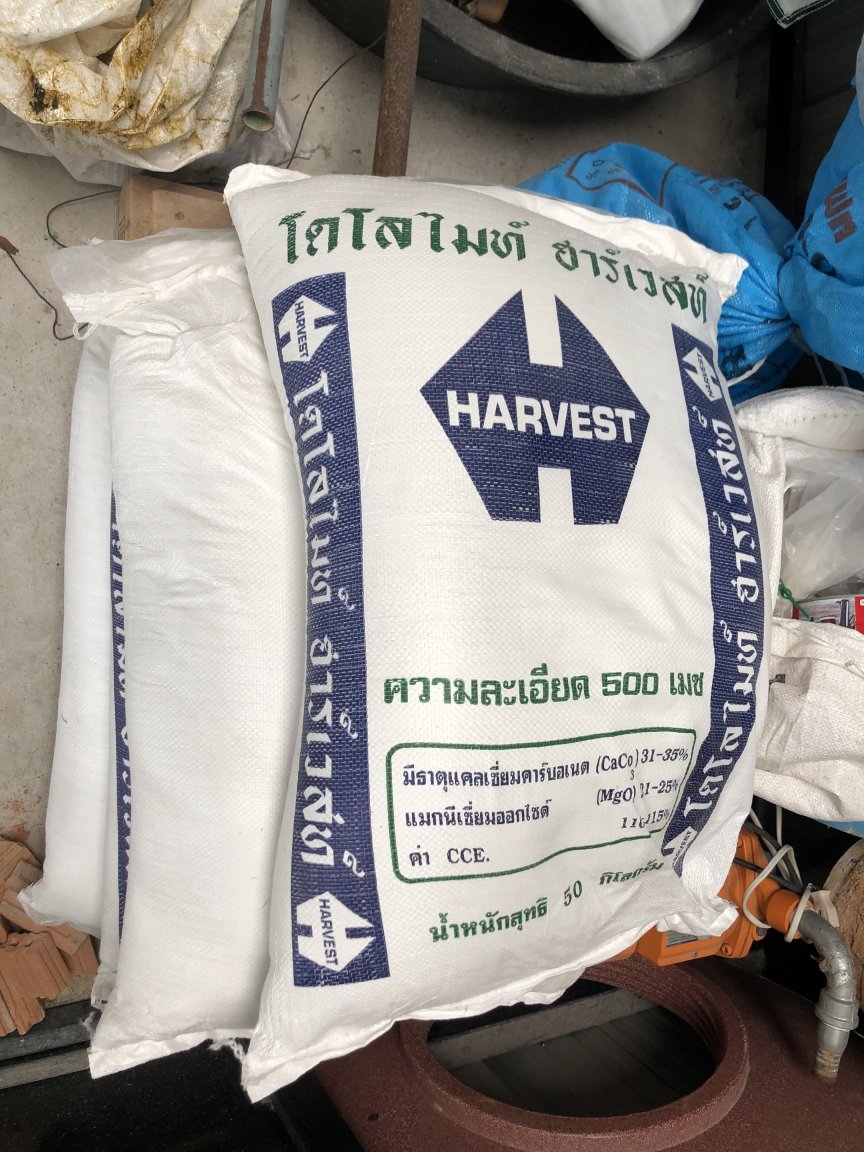
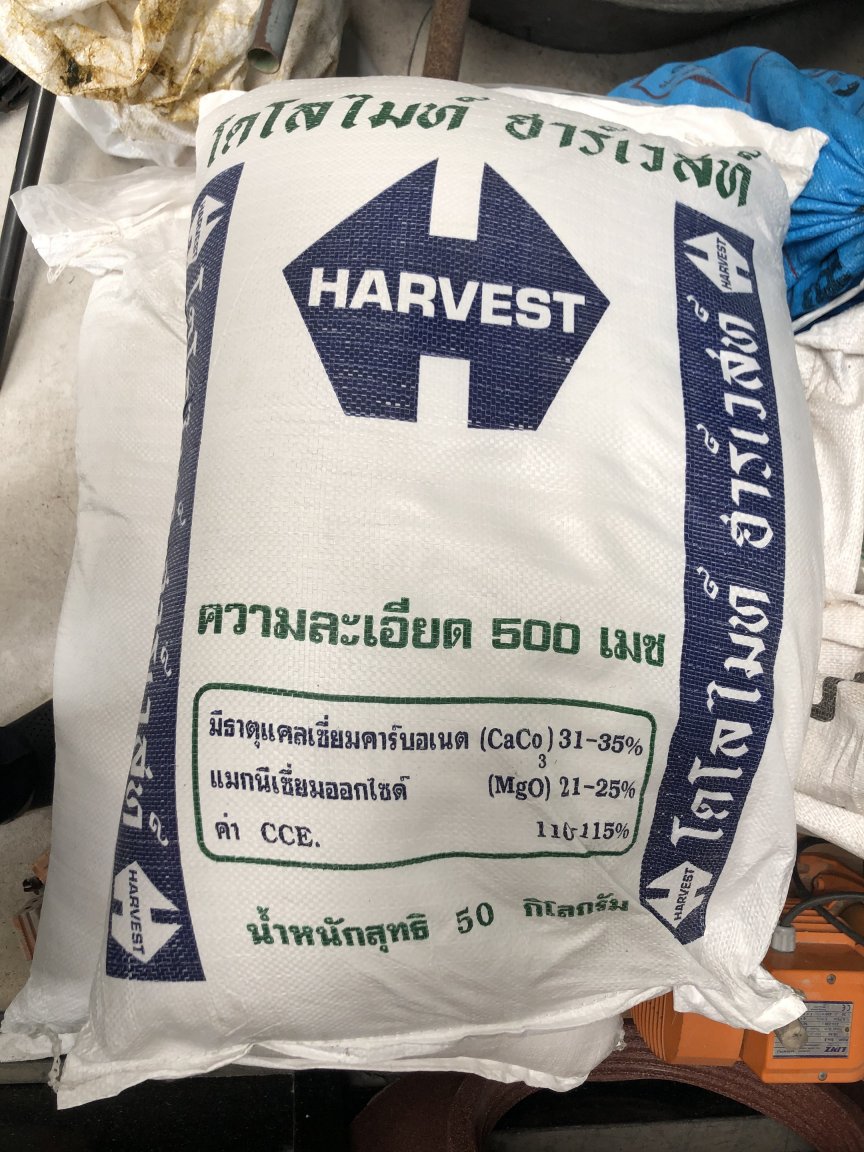
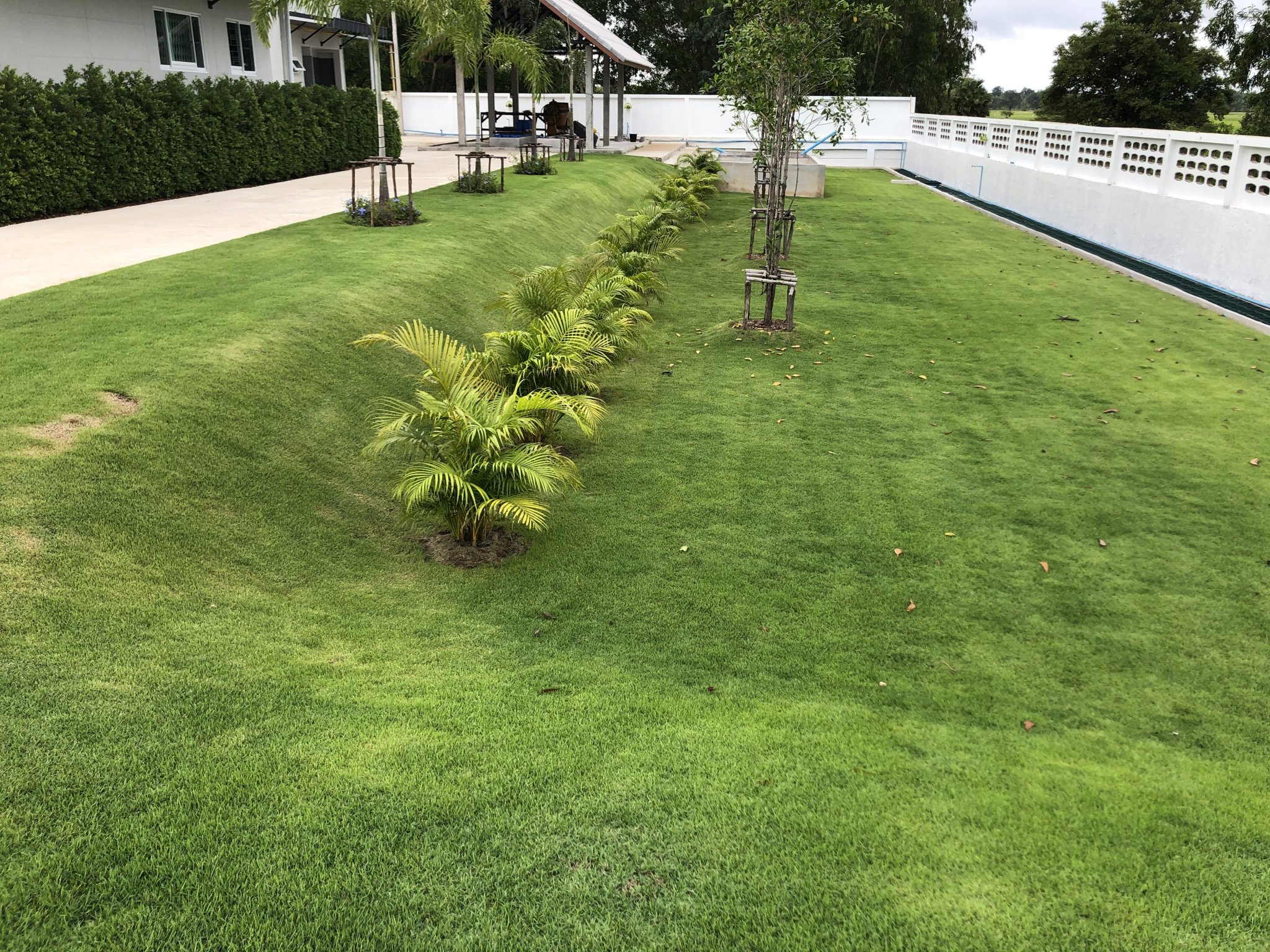
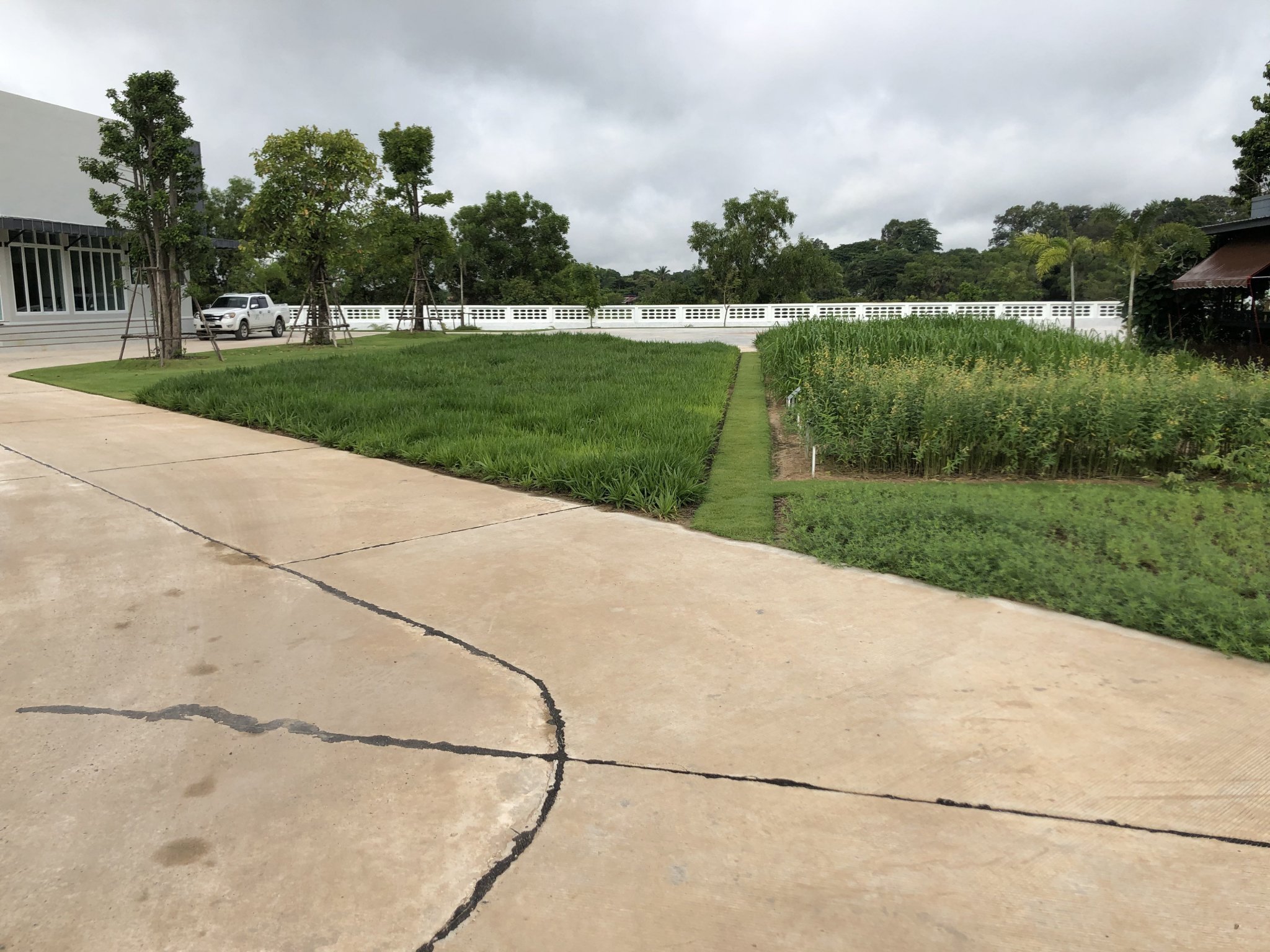
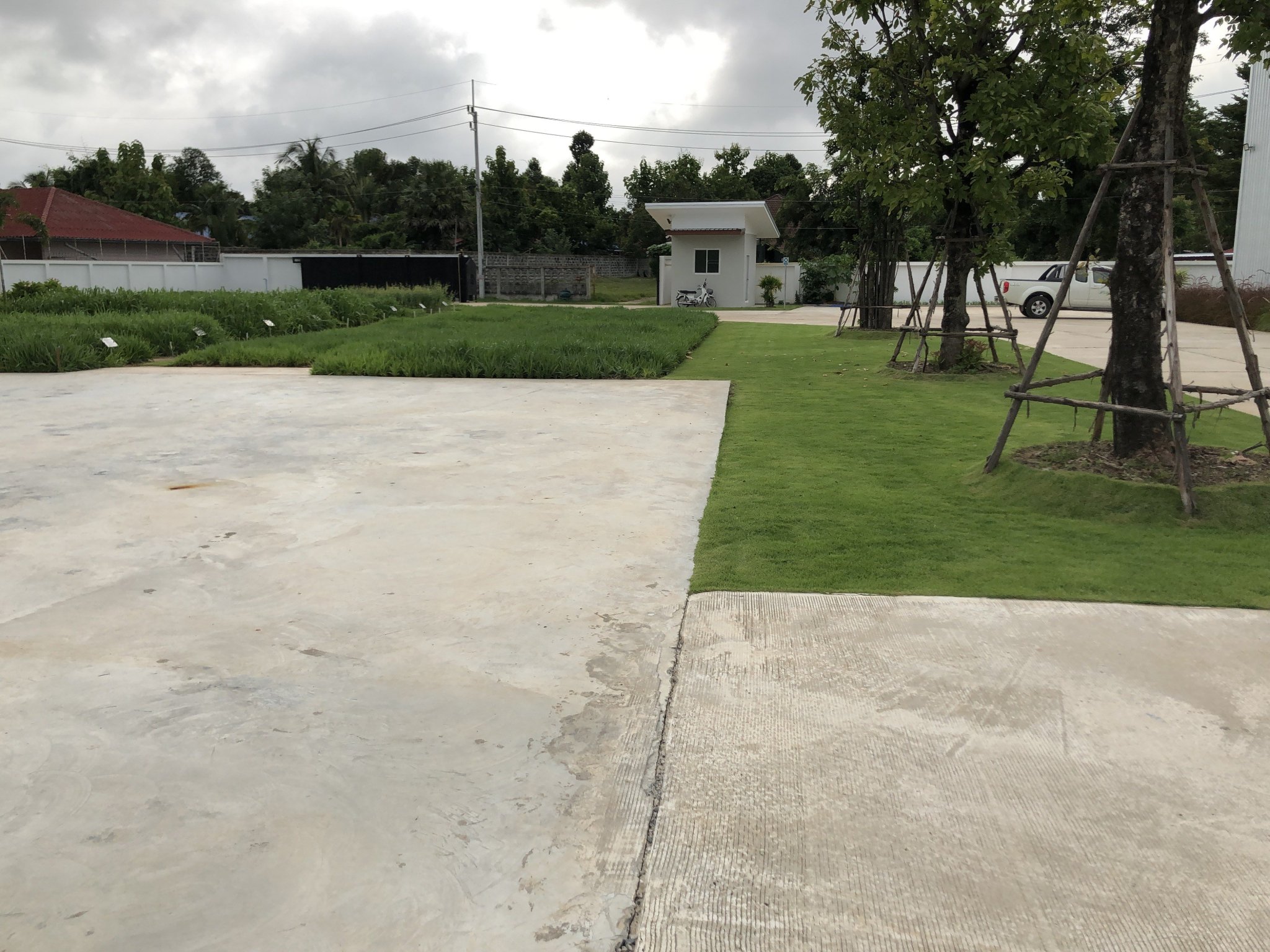






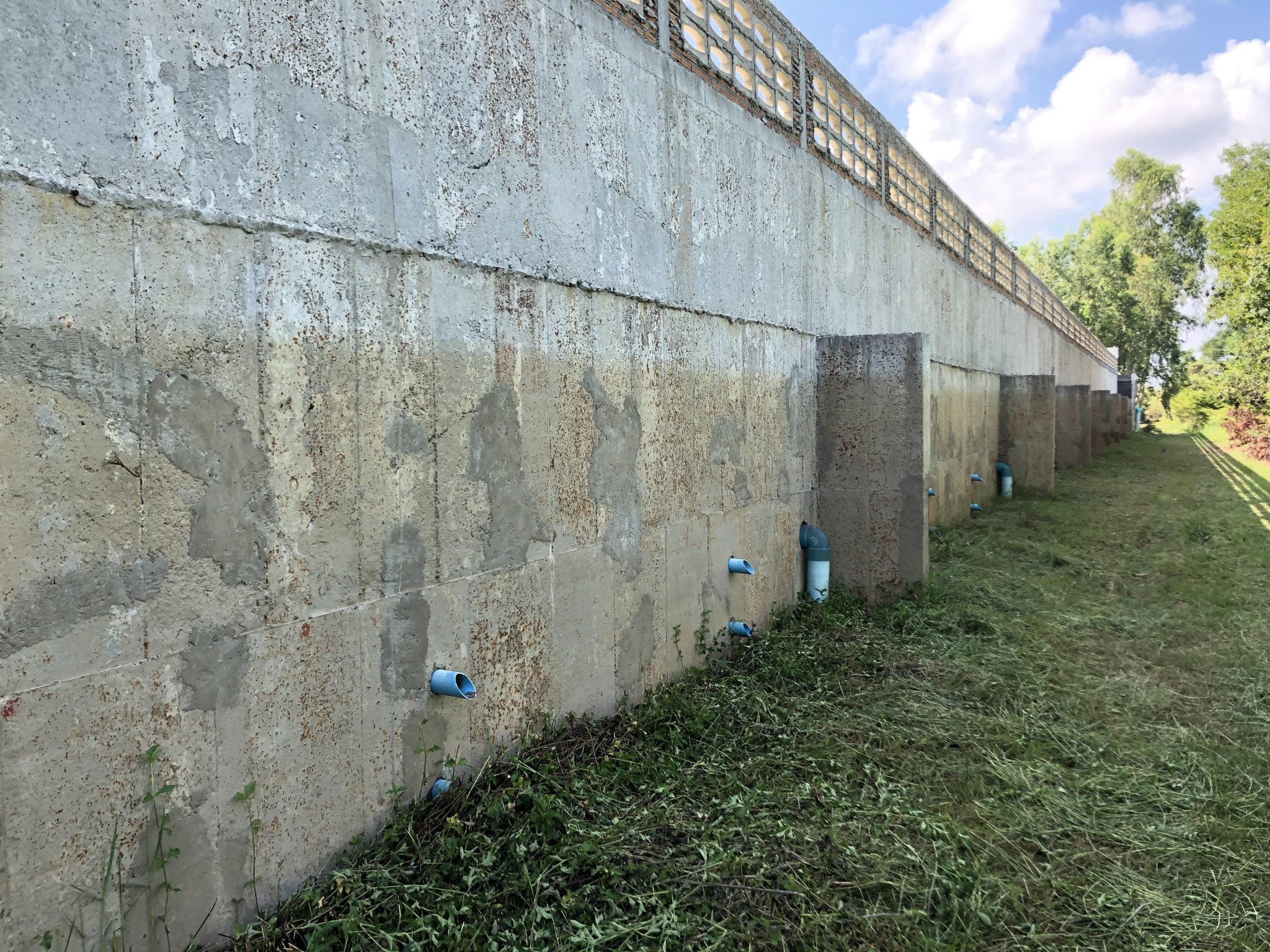
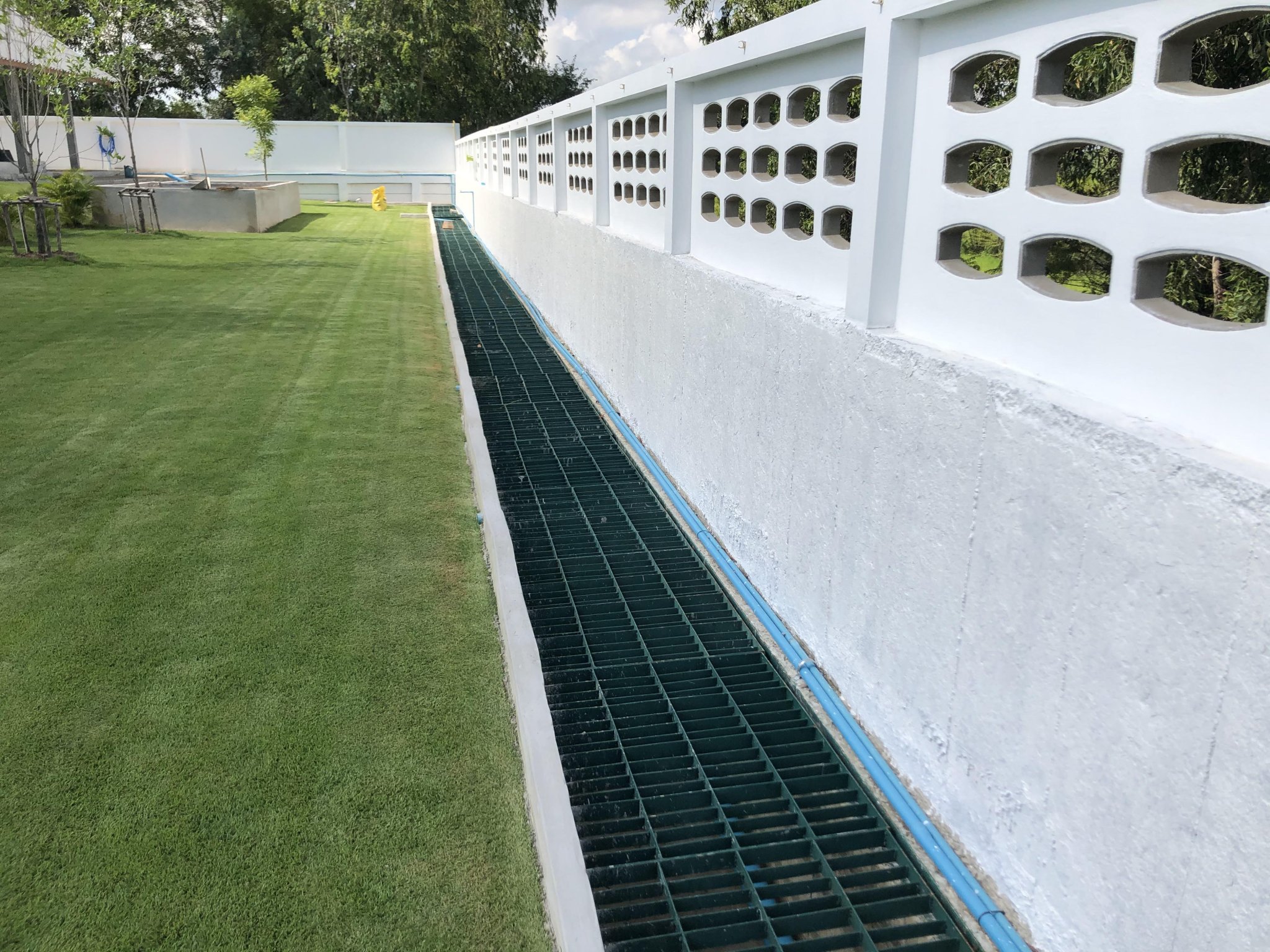








.thumb.jpg.d418de840c870ca75ca7c1294306d1a1.jpg)



Drought forces farmer to abandon rice harvest hopes
in Isaan News
Posted
With broadcast rice, sown in May or June, it is very common to cut the fields, especially if they are weedy, in late July-early August. This allows the rice plants to grow more quickly above the weeds, but only if decent rain falls in August and September. Years ago this cutting was never practised, because farmers always hand-planted rice later in the wet season into standing water which was normally weed-free.